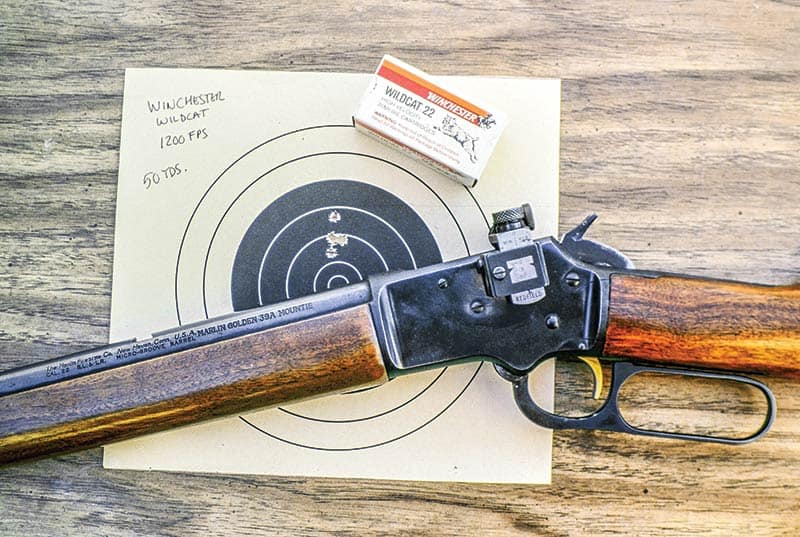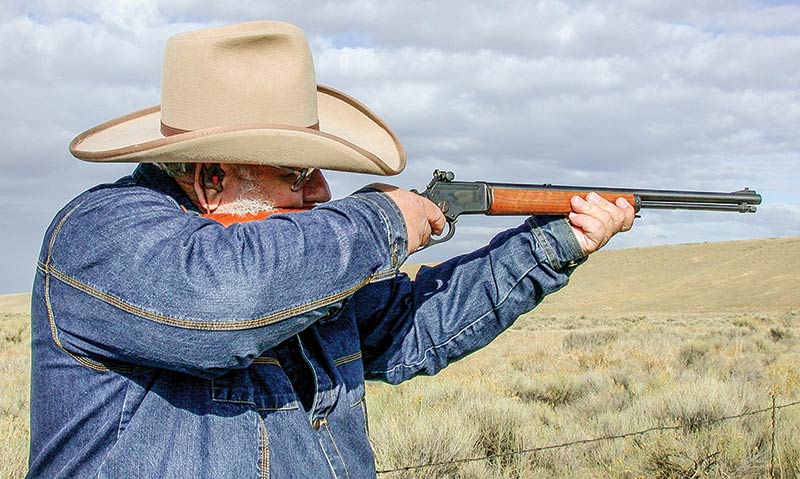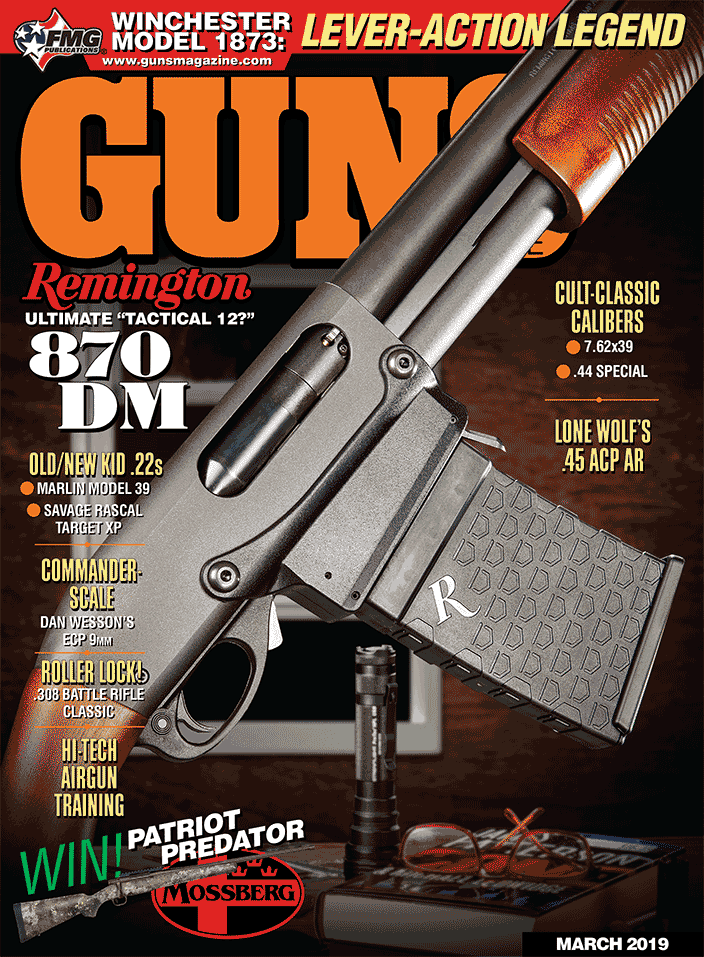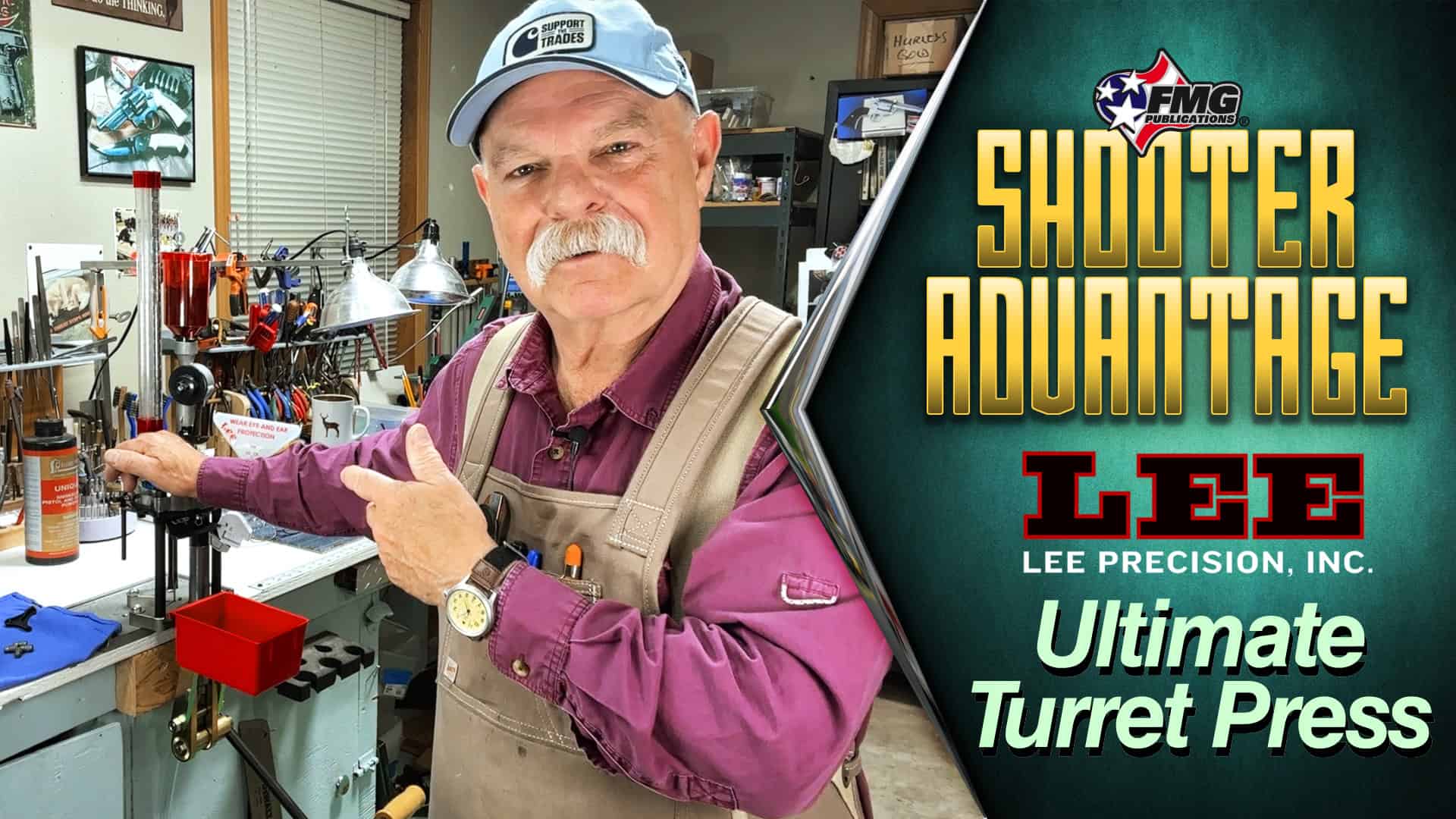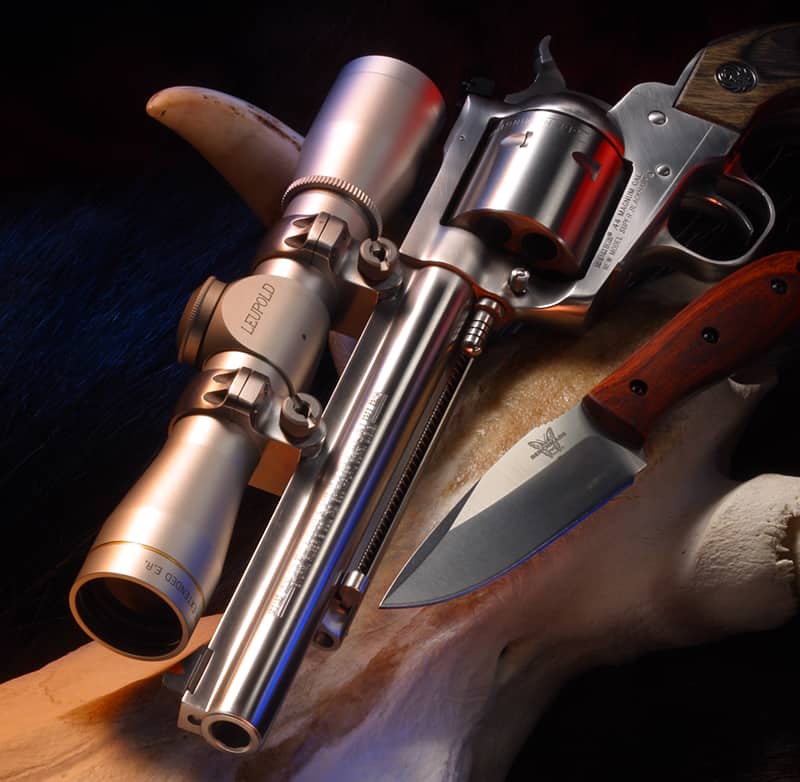Marlin Memories
Every family needs a good .22. Some families need several
John shot this target at 50 yards with his Marlin Mountie. Performance is vastly improved with the addition of a receiver peep sight.
The year is 1956. Eisenhower’s in the White House and will be re-elected in November. A first-class postage stamp costs 3 cents. John Wayne stars in what many think is his finest movie — The Searchers. The New York Yankees beat the Brooklyn Dodgers 4-3 in the World Series, and I’m looking forward to graduation and having a job that will afford enough money to buy me my first gun.
In those wonderful days a fellow only had to be 16 to buy a gun but 21 to vote (wise men realized the vote was more dangerous than the gun). It was quite a decision as to what my first gun would be. I’d grown up reading the likes of Jack O’Connor and Elmer Keith but on my 90 cents an hour “first real job,” the first gun would have to be a .22. My uncle had taught me how to shoot using both .22 rifles and pistols, but I wanted a rifle. A good-looking, swell-feeling rifle, which left only one choice in my young eyes — a Marlin Mountie.
If memory serves me right, the Marlin .22 cost me two weeks’ take-home pay but it was worth every penny because I don’t believe I’ve been more enthralled with any new gun in the last six decades. Saturdays were always spent with a couple boxes of .22’s (back then a box of 50 was less than 50 cents), good friends, and my wonderful little levergun. For me, the smell of powder smoke and Hoppe’s No. 9 were a whole lot more appealing than the smell of perfume. Things would change in a few years but only for a short time. My courtship lasted a little over three months — the only time in my life my guns gathered dust. Fortunately, the girl I married supported my love for good guns.
The Marlin .22 is the gun my dreams were made of. For many years, even before I knew what a Marlin was, I saw all those wonderful leverguns in the Saturday afternoon matinees and then television around 1948. Of course, I didn’t know at the time all the rifles I was seeing on the screen were actually Winchesters. I don’t believe I ever saw a Marlin used in a Western until TV’s Have Gun, Will Travel. Paladin’s rifle was definitely a Marlin.
It seems just a short wisp of time ago I bought the little Mountie. Over the past 60-plus years it’s accounted for countless numbers tin cans, ground squirrels and jackrabbits.
The scowling rifleman toted a Model 39-A in this 1962 Marlin ad from the pages of GUNS.
A Rimfire Classic
The first Marlin .22 arrived in 1891 and was the first .22 to accept Shorts, Longs and Long Rifles interchangeably. In 1897 the Marlin became an easy-takedown model and in 1922 it officially became the Model 39. By the time I was ready to buy mine, I’d settled on the straight-grip Mountie version (later to become the 39M) as opposed to the pistol-grip 39A. Both featured Marlin’s Micro-Groove rifling. Shooters still argue over whether the addition of more and shallower grooves really helped accuracy, but I have never had any quarrel with the accuracy of any Model 39.
The takedown feature made maintenance easy as you could clean from the breech end without worrying about nicking the muzzle. On the right side of receiver is a large slotted screw, easily loosened with a coin. You don’t remove it but just turn counterclockwise until it feels loose then you can easily separate the barrel and forearm from the action.
Now slide the bolt out to the rear and use the capture screw to lock the ejector out of its normal position. This allows a cleaning rod to be inserted from the back of the barrel without interference. When the Marlin is reassembled the capture screw must be turned to release the ejector. Since this whole operation is so easy I thought I had to religiously clean the Marlin 39 every week. However, with modern ammo — especially in the dry climate where I reside — such attention to duty isn’t necessary.
It’s been, well, quite a spell since John bought his first Marlin .22 but he still enjoys shooting it!
Family Trainer
I learned to shoot with the Mountie as did my kids and grandkids. A few years ago I found another one at a reasonable price. My two daughters learned to shoot with the original and now the three of us try to get out once a week to shoot and then go have breakfast. Want to guess what rifle we shoot? Actually, now it’s “rifles” as I have two Marlin Mounties set up with receiver sights.
I recently found one of the pistol-grip Marlin Model 39A’s with a good action and perfect rifling so it was totally refinished (both the stock and the metal parts) and went off to my granddaughter. My oldest grandson used his to keep the varmints off the family property in Montana. His dad had used my original 39M to shoot ground squirrels off the local golf course every morning before they opened. Those days are long gone!
Back in the early days, I used all three types of .22’s, Shorts, Longs and Long Rifles. Now I can’t remember the last time I saw a box of .22 Longs and .22 Shorts are also rare. I thought it was pretty special I could load any of these — in any order — in my Marlin and they would all shoot, every time.
Every shooter should begin with a .22 rifle. I enjoy my old Marlin almost as much today as I did in the 1950s but nothing can capture those original moments. I think .22’s are so important that when one of my grandkids gets married, their wedding present is a .22 rifle. I do take a little more modern approach and gift them with a Ruger 10/22, which is much easier to find.
The Marlin 39 seems like a simple little rifle, however note the following from Bill Ward’s excellent Walnut and Steel — Vintage .22 Rifles (2014):
“Although the action of the M39 appears fairly simple and straightforward, I think looks can be deceiving, for there is something akin to mechanical slight-of-hand going on as the action is opened. Examination of the bolt will reveal some fairly complex machining is necessary to accommodate the requirements of feeding, chambering, firing, extraction and ejection … As the lever is opened, the bolt is pulled to the rear, with the front lever extension bearing on a downward projection of the firing pin as well as a slot in the underside of the bolt. The rearward movement of the bolt also cocks the hammer. Pulling back up on the lever, the cartridge is placed directly in front of the forward moving bolt for a virtually jam-proof straight-line feed.
“Continuing to lift the lever results in final chambering with a single extractor snapping over the rim of the case as the bolt is fully closed. Lockup is accomplished by the tip of the forward lever extension bearing on a projection at the bottom of the bolt. Finally, after firing, the empty case is pulled up by the extractor and as the bolt continues its rearward movement, a spring-loaded arm attached to the left receiver wall contacts the base of the cartridge and kicks it out to the right. The fact this could be accomplished with relatively few moving parts attests to the design genius of Lewis Hepburn, Andrew Burgess and John Marlin himself.”
What does the future hold for Marlin? Who knows? Just about the time they’ve managed to bring out leverguns worthy of the Marlin name again, Remington finds themselves trying to work through bankruptcy. I still keep my eyes open for any of the older Marlin .22’s on the used racks. With the first four great grandkids already arriving, it’ll be a while before this family no longer needs another .22 Marlin.
